One decision made – the destination for the sail, a hammock south of the Bull Island public dock on Summerhouse Creek. The second decision – the course, as I headed out Anderson Creek toward Bulls Bay. The speed of the northeast wind had reached the predicted 14 -17 knots, so I took a peek out to the open water before deciding. The tide was flooding, with the possibility of cutting across “Shortcut Shoal” if I took the Bay passage. The other course would be to the south and connect with the ferry passage, a longer but less exposed route. The view out the Bay was promising – I had seen the Bay rougher – so I headed out on a close hauled course.
Clouds prevailed on this Saturday, the last weekend of the summer. Bulls Bay was humming with the northeast wind, and the long fetch allowed the swell to build. Only one boat lay ahead, and after they headed in we were the only craft in sight. I held the close hauled course halfway across, then bore off to a close reach, the fastest point of sail for Kingfisher. Almost immediately we broke the surface tension of the water, and planed along as fast as the craft could go. Our course was perpendicular to the waves, and we occasionally surfed across a swell. We were above the shoal, and my hope was not to touch. It was a wild ride, but all held together without incident until we reached the peaceful waters of Bull Creek directly behind the island.
I changed course to a full run, and sponged some of the water shipped from the reach across the Bay. I released the water over the side, and the sponge was ripped from my hand.
MAN OVERBOARD
[If sailing on a run, head up gradually to close hauled, come about and sail back for the pick up.]
I completed the maneuver halfway decently, and made the grab of the sponge. I would need it again.
I continued the run until the confluence with Summerhouse Creek, and took this waterway until we passed the ferry Caretta at the public dock. I spoke briefly to a boater and his son fishing near the dock, and he inquired where I was headed. The last time I sailed this direction in the Summerhouse Creek, the wind was from the southwest; today the wind and incoming tide were with us. On a long section of the wide creek the towers of the Ravenel Bridge appeared over our bow miles in the distance.
Several branches veered off, but we sailed on in the main waterway until the hammock appeared ahead. The waterway split, but the southeast side seemed the correct course. Searching for a landing site, I spotted a place where the marsh was narrowest, and tacked around for the approach. The low hammock had a sand ridge here with an eroded face, and I sailed through some cordgrass, pulled my daggerboard out, and nestled the bow almost up on the shore. I stepped out of the cockpit to secure Kingfisher, and underestimated the depth of the water.
MAN OVERBOARD
The water came up and over my waist, and I walked up to the high marsh, populated with glassworts. I had gotten wet on my sail across Bulls Bay, but was soaked now. Fortunately, the waters were still warm, as was the air despite no sun.
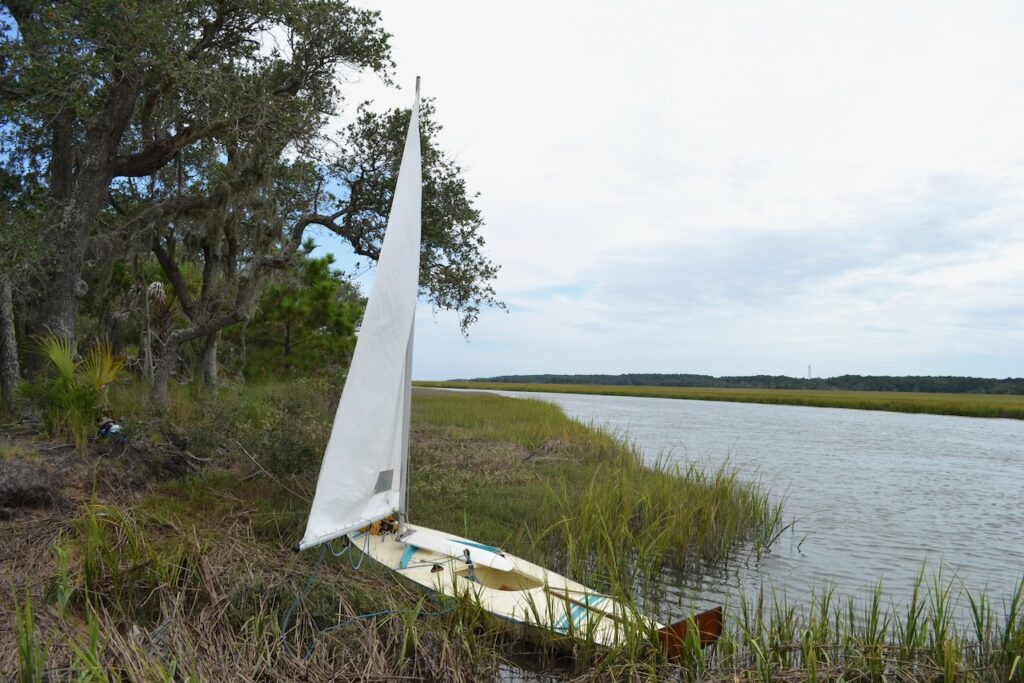
I pulled off my lifejacket, and grabbed my lunch. An outboard came down the creek, and turned off his motor to talk. It was the same boater who had wondered about my destination, and he now asked if I was planning to camp out here. I answered no – camping is against refuge regulations. He also wondered how I was going to make the return sail, since the direction would be straight upwind. I allowed it would be a lot of tacking, but anticipated a slowing of the flooding tide. He and his son continued past the hammock to try out the fishing, and I began a walk around the hammock.
A hammock is an “island in the marsh”, small elevations providing for upland botanical communities. By definition they must be less than 500 acres, and in SC over half are less than one acre. (For a couple other trips to Cape Romain hammocks, see Additions to the archives: two posts on hammocks.) I am not sure the size of this hammock, but a satellite image gives an idea of its shape.
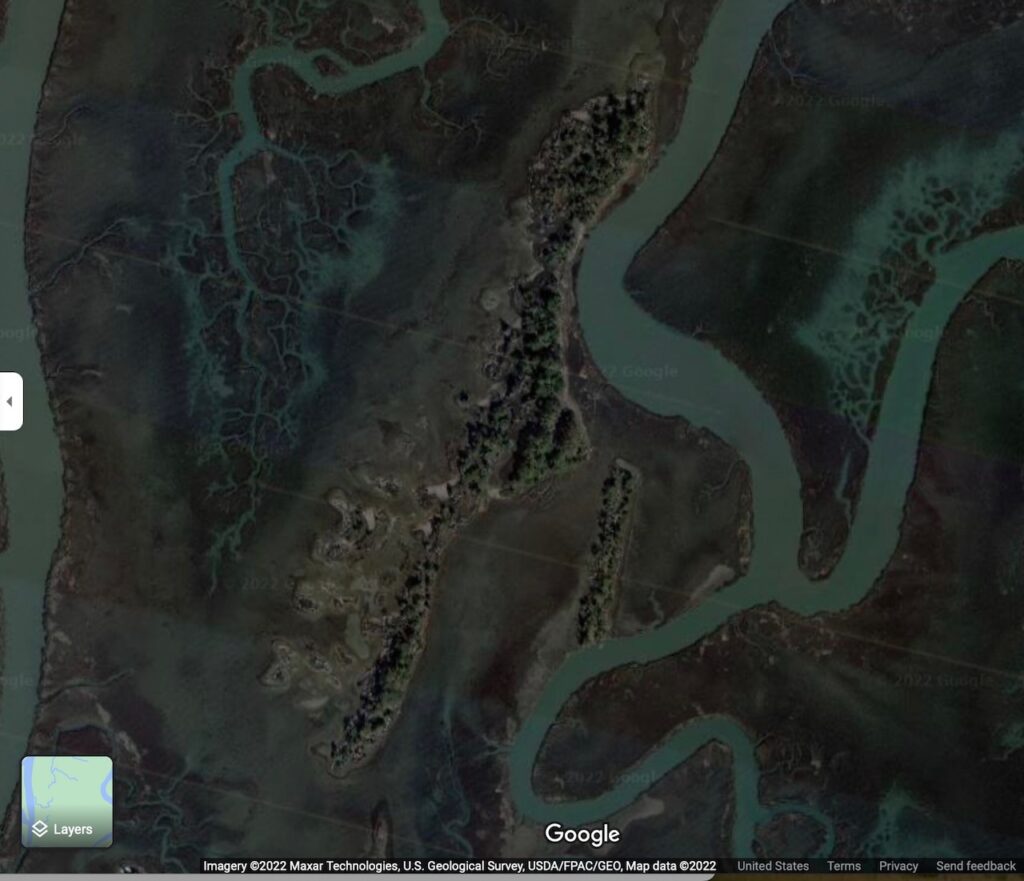
My walk only covered less than half of the isle. The small upland contained a small forest community: live oaks, pines, cedars, palmettos, and sizable patches of prickly pear. Smooth cordgrass, glassworts, and sea oxeyes dominated the low and high marsh, and fiddler crabs had excavated burrows around the intertidal rim of the hammock. At one place the high marsh crossed the hammock with an absence of trees. Unlike other hammocks I have visited, there was no evidence of shell middens, though the isle was attractive as a campsite.
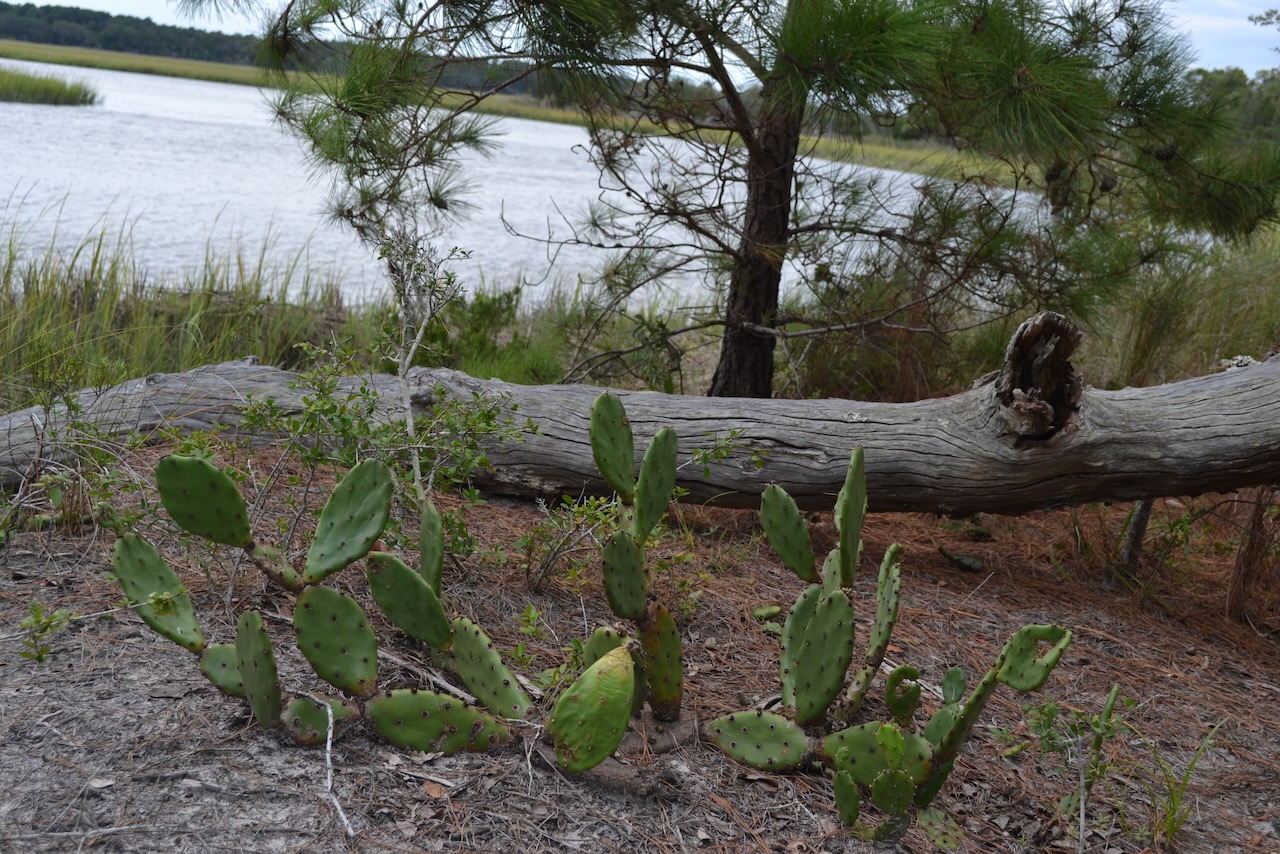
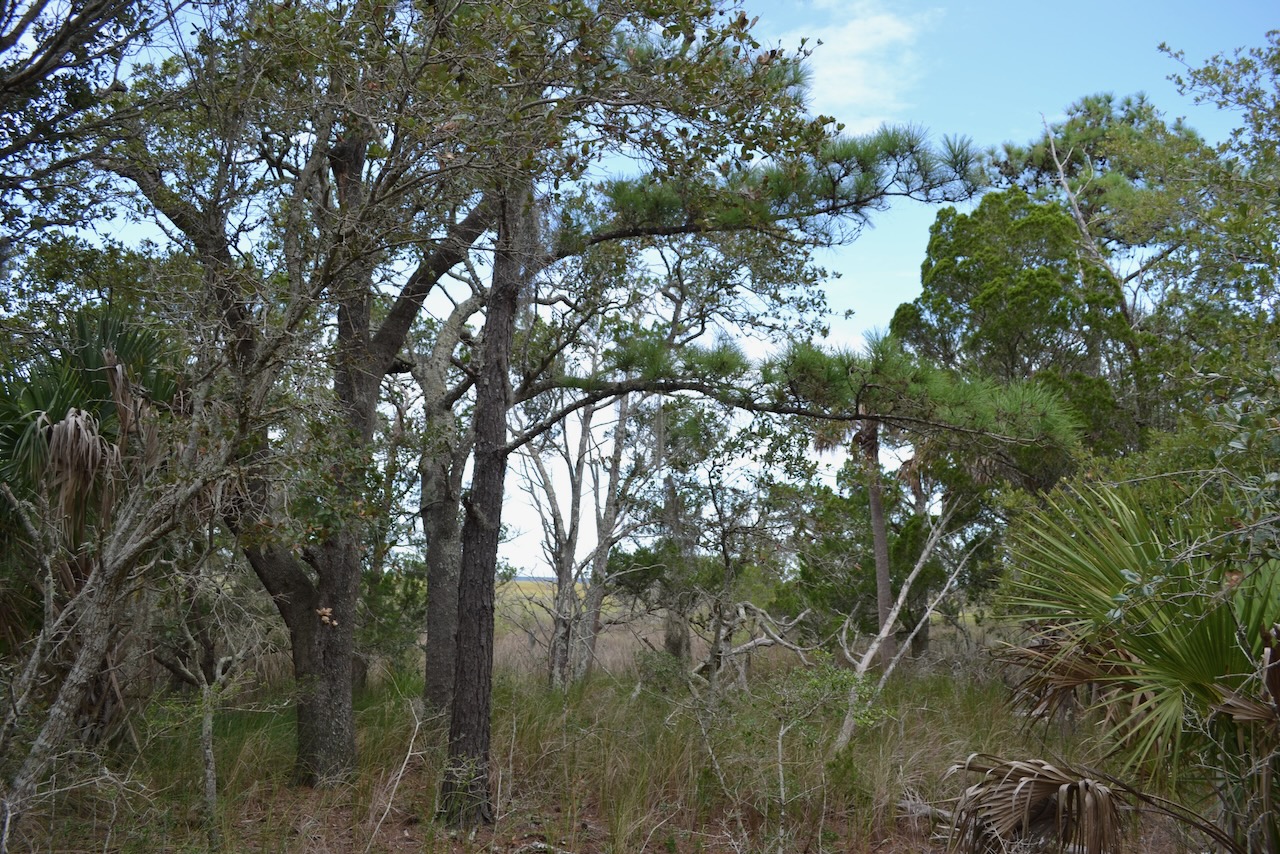
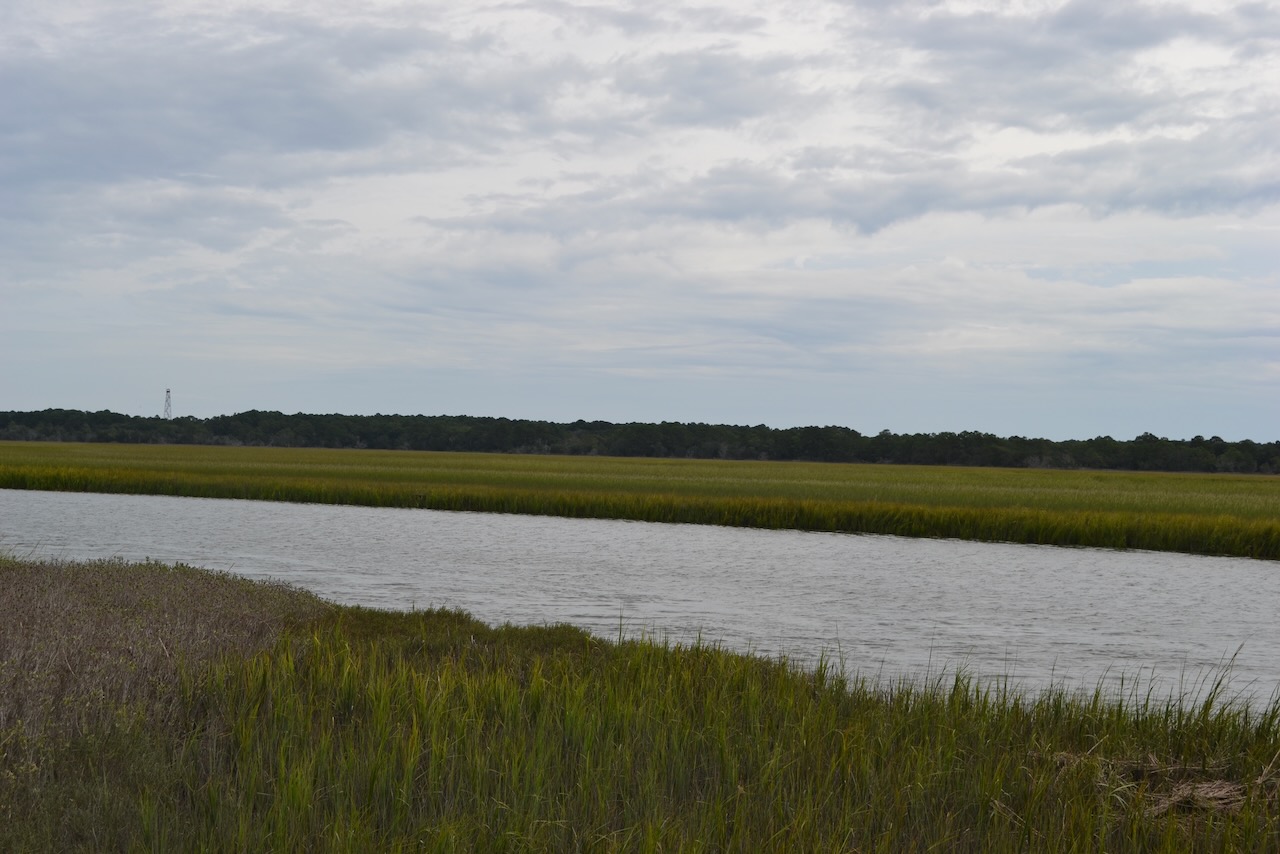
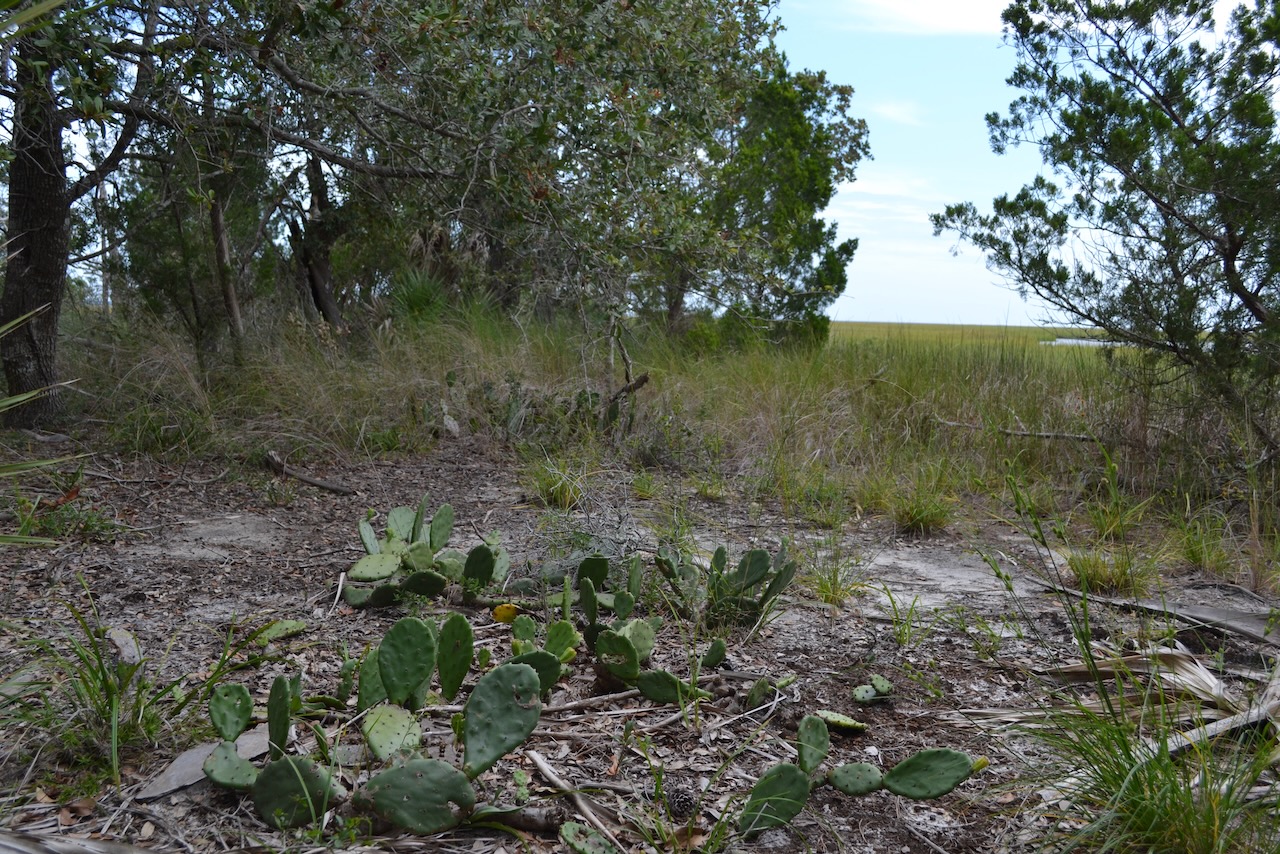
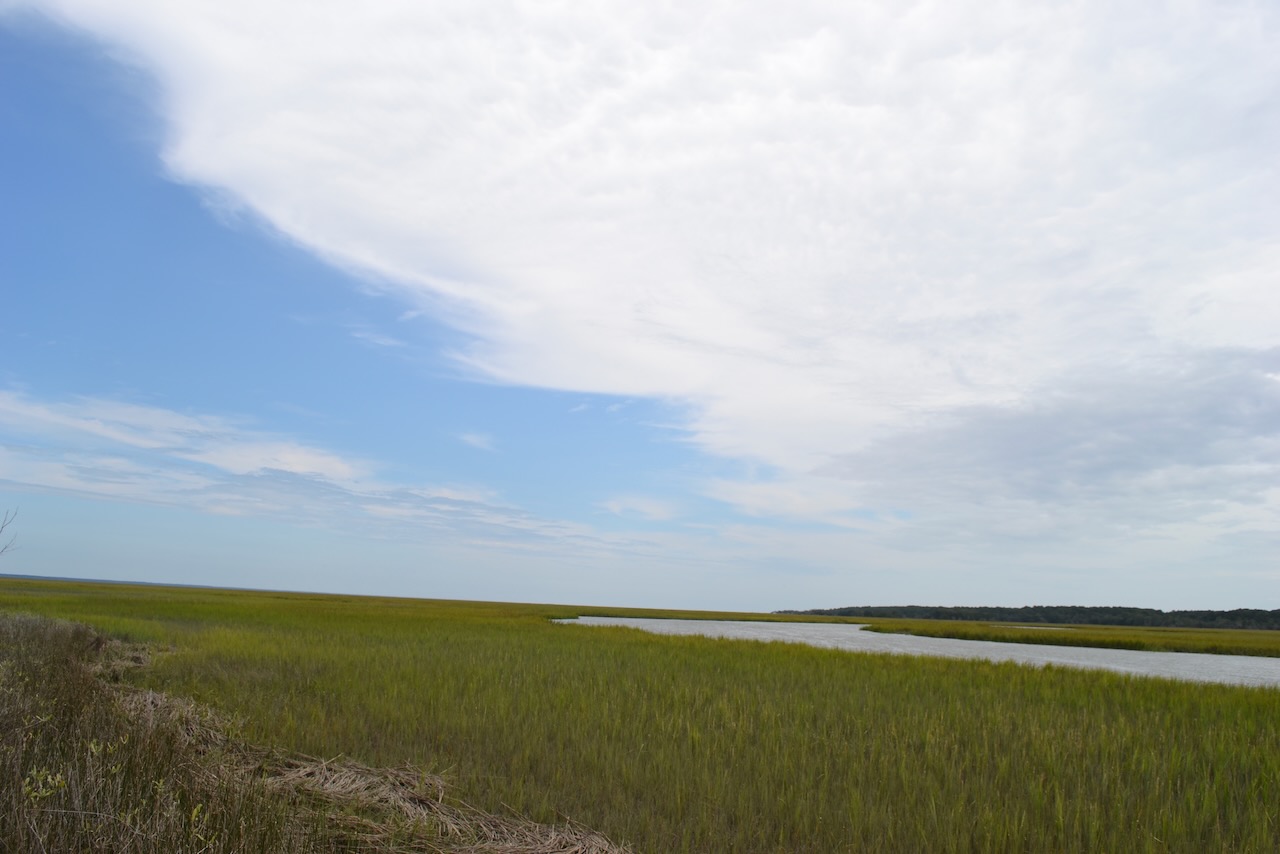
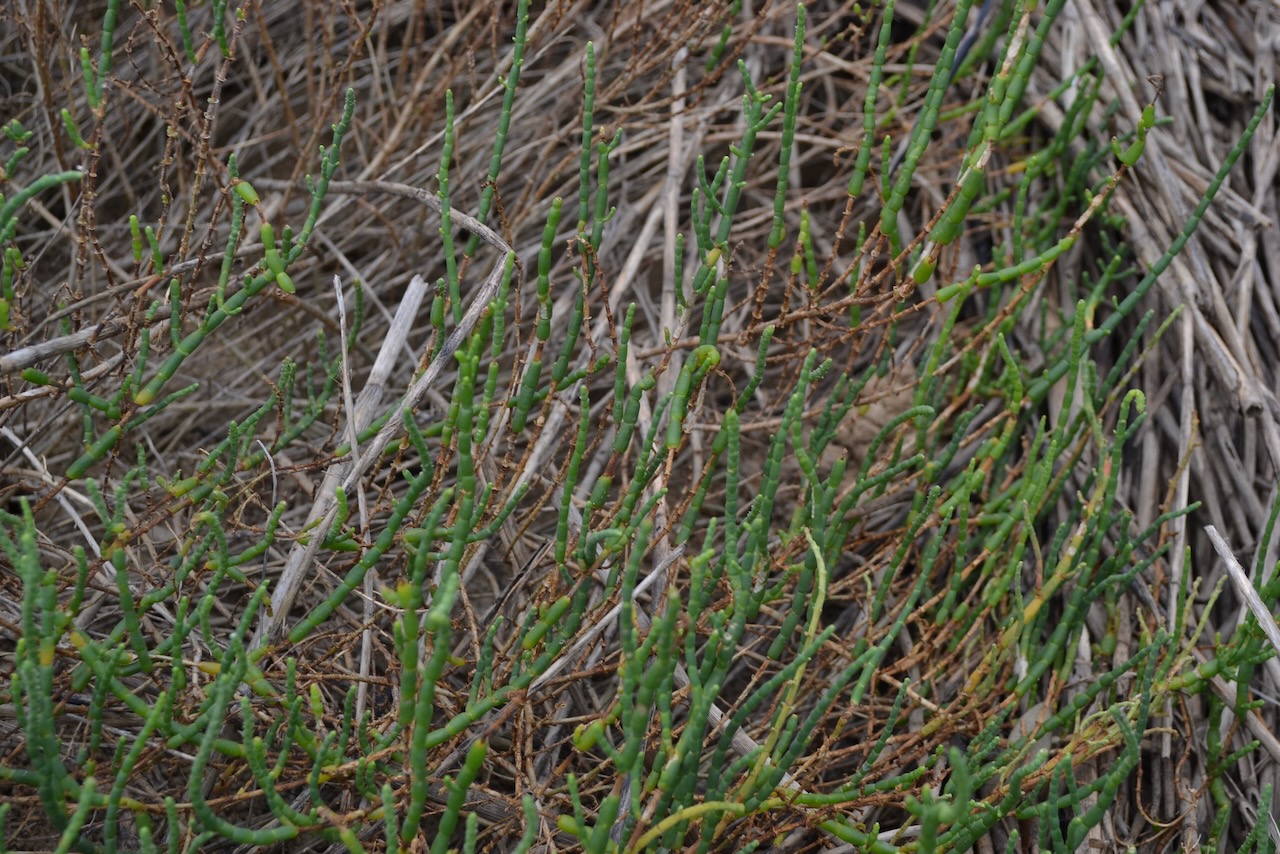
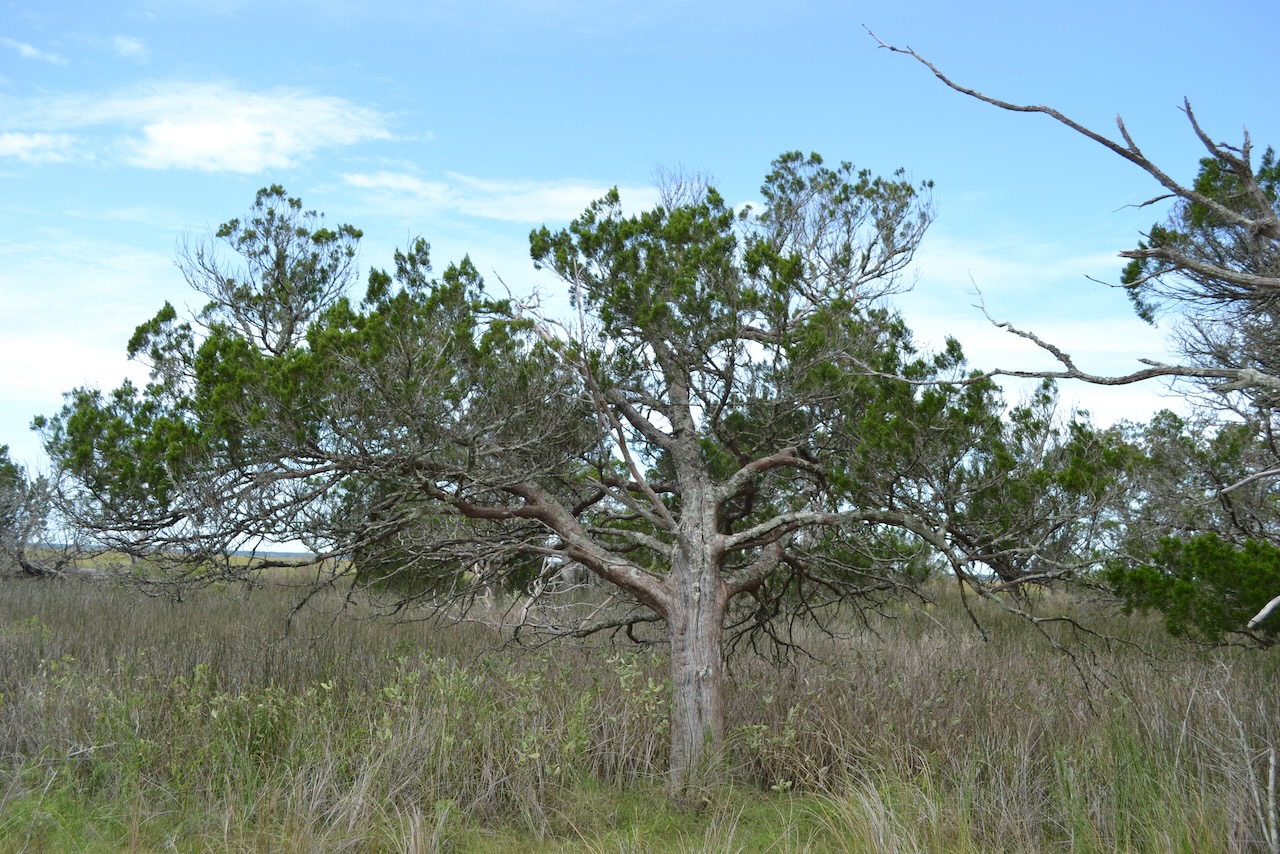
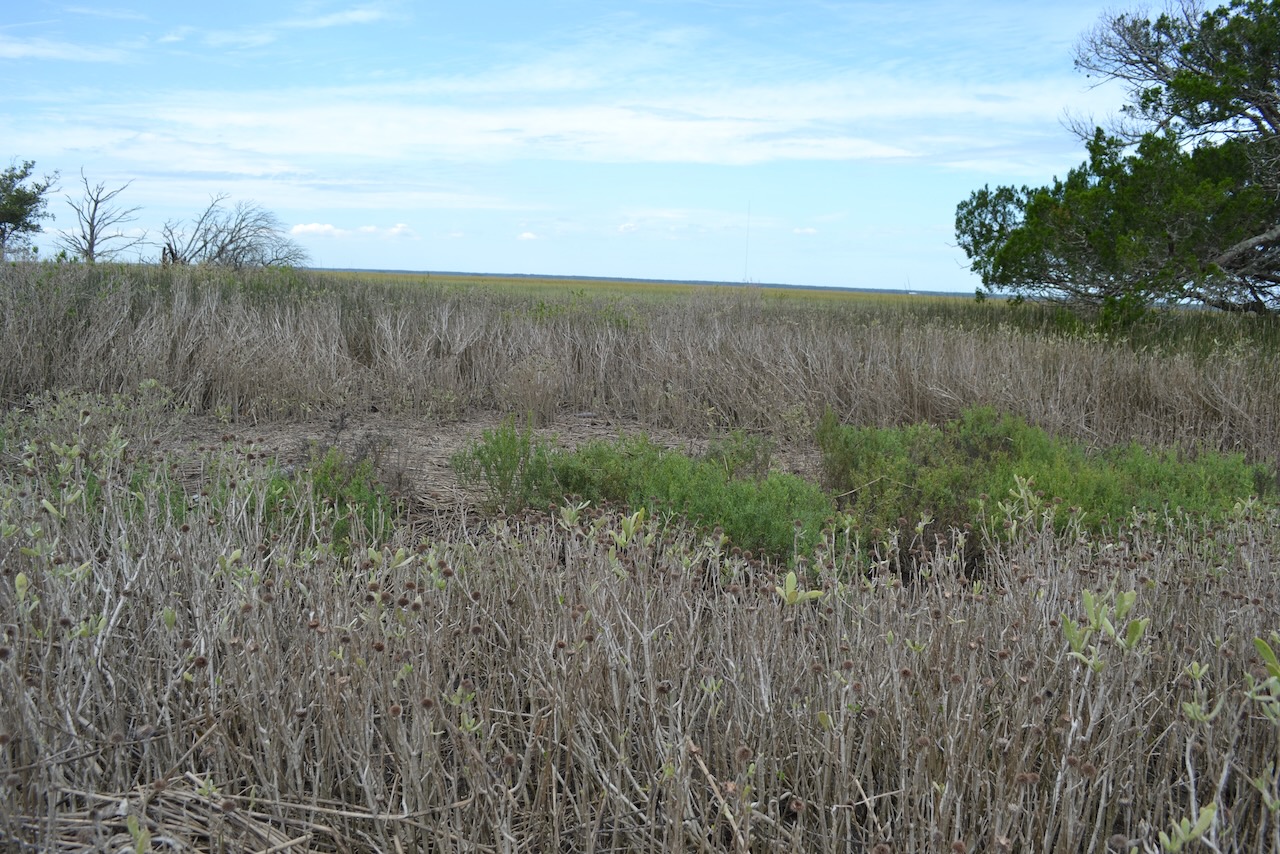
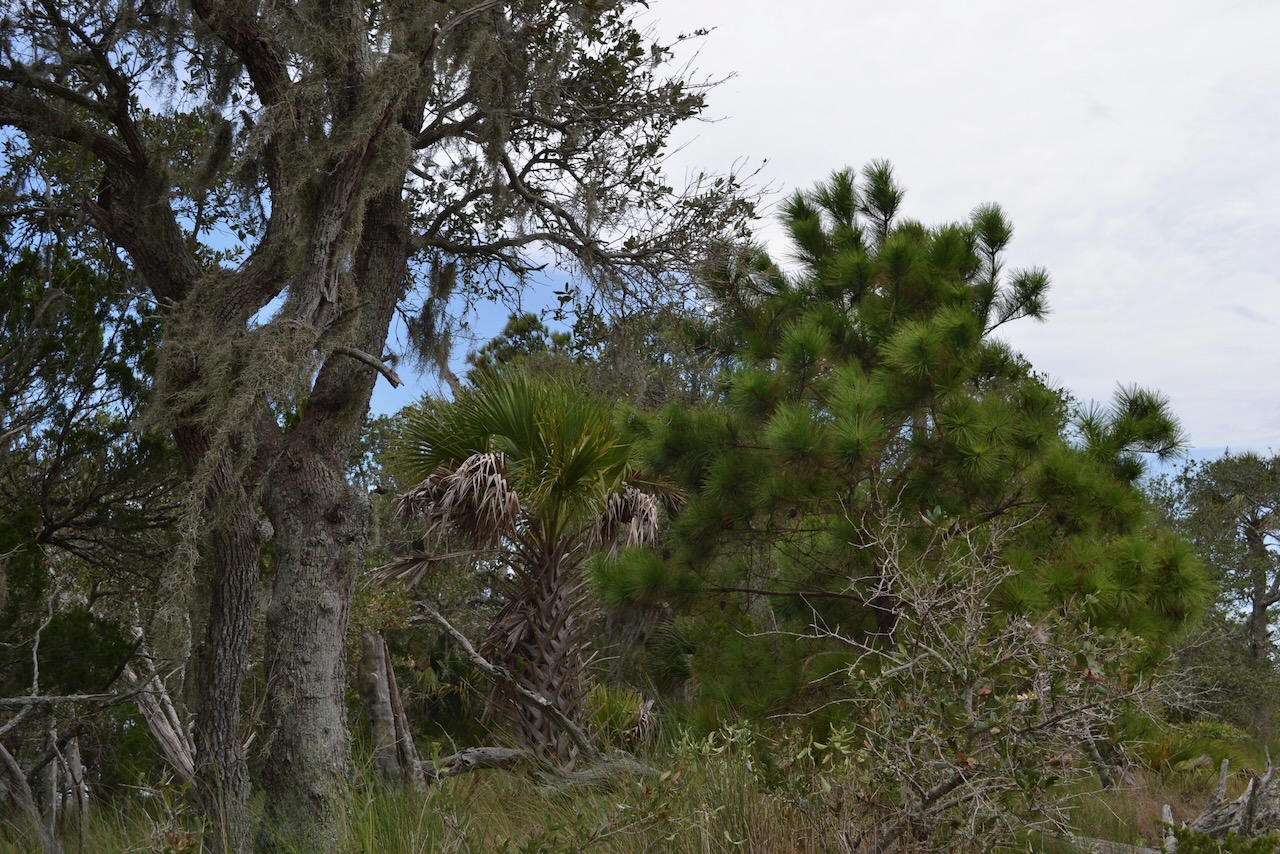
Casting off from the hammock, I began the upwind sail. There was plenty of tacking, but the high tide allowed a close approach to each creekside before coming about, and thankfully the wind had held. It was a long slog, and a few of my tacks were sloppy. No one was at the public dock as I passed. I neared the junction with Bull Creek where I would bear off and follow the ferry passage for most of the return sail. On one tack my hat was knocked off by the boom, though was still tethered to me by a wind cord. I soon tried to put it back on with one hand, and successfully, I thought, but learned later I had unleashed the wind cord. And the wind took it off…
MAN OVERBOARD
[When sailing upwind, bear off and then jibe, and come up to close hauled for the pick up.]
I made a mess of this pickup, approaching to windward of the hat (the proper method for big boats). I ran over the hat, and had to come back again to make the successful grab.
It would not have been a big thing if I hadn’t retrieved the sponge, but the hat would have been a real loss. I had made two overboard drops in one day, not counting my stepping into deep water. An actual man overboard is not a good thing for singlehanded sailors, and I do my best to avoid it. In my younger days, on one memorable sail, I went overboard twice on capsizes in the ocean. During the first I was able to hold on the sheet, using it like a surfer’s lease to pull the boat back to me, but on the second I lost all all contact with the boat.
With the hat securely on, I completed the transition into Bull Creek, and the ferry passage. It was smooth sailing in a moderating wind and at the tide change. There was some close hauled sailing needed until making the turn into Anderson Creek, and the run back to the landing.
As I cleaned up the boat at home, including raising the sail for a rinse and drying, I realized that the wind had dissipated. I had earlier assumed the NE wind would continue all day, but I guess it had blown itself out in a loss of energy. Just like this aging sailor.
Glad you made it safely home! You went overboard like our Tarheels are doing!
Hopefully they will recover and sail on (into basketball season).
Glad you, your sponge, and your hat, made it home safely!
An unusual day in the marsh creates another wonderful story!
Appreciate your sharing!
Thanks Ray, glad you enjoyed.
I really enjoyed reading about your adventure! Glad you made it home safely – with your hat!!!
I would have searched for a long time before sailing home without it.
Thoroughly enjoyed your story. A wonderful way to spend the day ! I’m envious.
Glad you know how to handle difficult situations – and got your hat back!